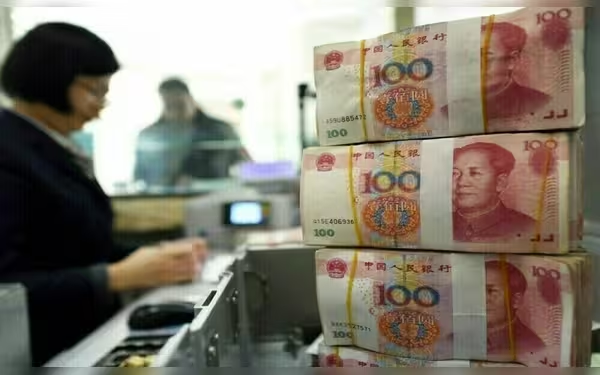Saturday, November 16, 2024 05:52 PM
PBOC Strengthens Yuan Amid Economic Concerns
- PBOC sets stronger yuan midpoint to combat depreciation.
- Yuan recovers from three-month low against US dollar.
- Market reacts to PBOC's intervention with slight yuan recovery.
 Image Credits: brecorder
Image Credits: brecorderPBOC intervenes to strengthen the yuan, recovering from a three-month low against the US dollar amid economic concerns.
In recent days, the Chinese yuan has experienced significant fluctuations, particularly against the US dollar. On Wednesday, the yuan managed to recover from a more than three-month low, thanks to a stronger-than-expected official midpoint guidance set by the People’s Bank of China (PBOC). This move indicates that Chinese authorities are becoming increasingly concerned about the rapid depreciation of their currency.
The yuan's decline began following the recent presidential election in the United States, where Donald Trump proposed imposing tariffs of 60% or more on goods imported from China. Such tariffs, along with other economic policies like tax cuts, are anticipated to create inflationary pressures. This situation is likely to keep US interest rates relatively high, which in turn strengthens the dollar and puts additional pressure on currencies of countries that trade with the US.
Before the market opened, the PBOC set the midpoint rate for the yuan at 7.1991 per dollar. Although this was the weakest fixing since September 2023, it was still 314 pips stronger than what analysts at Reuters had predicted. This deviation is the largest seen since August, suggesting that the authorities are keenly aware of the yuan's depreciation pace. According to analysts from Citi, “Markets are likely to read into this as discomfort from authorities at the pace of CNY depreciation.” Following the announcement, the USDCNH pair fell by 0.1%, indicating a slight recovery for the yuan.
In Asian trading, the offshore yuan was valued at 7.2288 per dollar, reflecting a 0.2% increase. Ken Cheung, the chief Asian FX strategist at Mizuho Bank, noted that “It showed that 7.35 per dollar remains a key support level for the onshore yuan.” The spot yuan opened at 7.2251 per dollar and was trading 170 pips higher than the previous session's close, although it remained 0.27% weaker than the midpoint rate.
Historically, the yuan has faced challenges during periods of heightened trade tensions. For instance, during Trump's first term, the yuan weakened by approximately 5% against the dollar following the initial round of tariffs on Chinese goods in 2018. A year later, as trade tensions escalated, the yuan fell another 1.5%. Currently, the yuan has depreciated by 1.4% against the dollar this month and is 1.6% weaker year-to-date.
The recent actions by the PBOC to stabilize the yuan reflect a broader strategy to manage economic stability amid external pressures. As global trade dynamics continue to evolve, it will be crucial for investors and policymakers to monitor these developments closely. The yuan's performance not only impacts China but also has significant implications for the global economy, making it a key currency to watch in the coming months.













